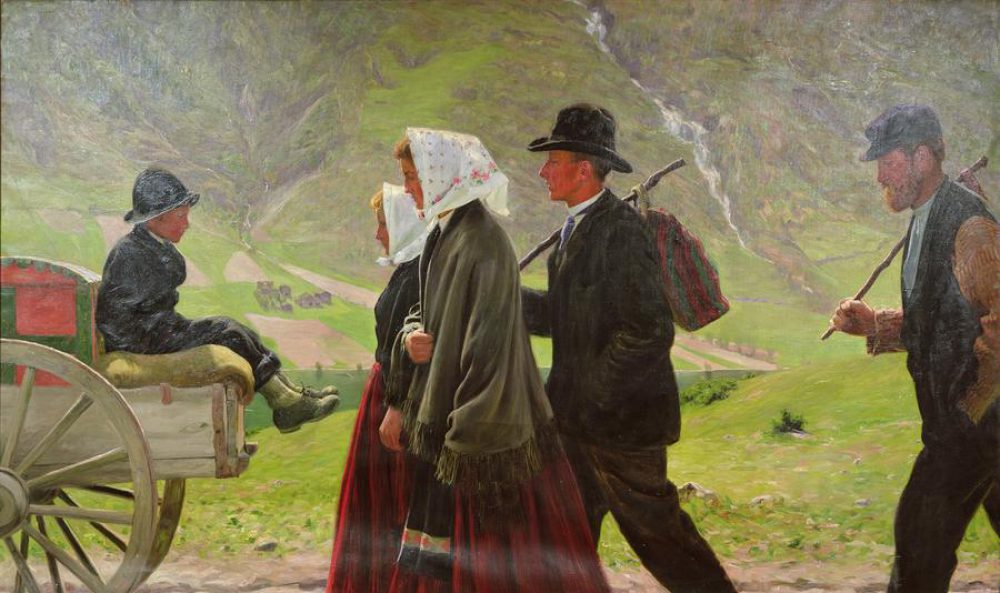A Paper Presented by Dr Lucinda Lax:
On 29th November 2016, the Diaspora Studies Graduate Workshop was delighted to welcome Dr Lucinda Lax, Senior Curator of 18th Century Collections at the Scottish National Portrait Gallery. Lucinda is a graduate of the University of York. Her doctoral research focussed on Edward Penny (1714-1791), first Professor of Painting at the Royal Academy 1768-1782. Since her appointment to the SNPG in January 2014, she has developed a particular interest in the Scottish Diaspora and recently curated the Gallery’s Scots in Italy exhibition. Her paper considered Franciszek Smuglewicz’s painting of James Byres of Tonley and his family.
_______________
In late 18th century Rome, James Byres of Tonley (1734-1817) was the foremost tour guide of his day, celebrated in equal measure for his knowledge of art, architecture and history. The Aberdeenshire born Byres was the antiquarian’s antiquarian. In 1766, he even started work on pioneering research into Etruscan tombs. Amongst his illustrious clients, he numbered Edward Gibbon, the Hon. Charles Greville and the Fifth Duke of Devonshire. For twenty-five years, following the death of the English antiquarian James Russel, Byres was the leading Cicerone of his day. But what was the secret of his success? How was he able to exploit social, political, and even sexual networks? In this fascinating paper, Lucinda argued that it was Byres’s ability to manipulate these networks which made him as much Cicerone as art dealer and cultural intermediary.

https://www.nationalgalleries.org/portraitgallery
Smuglewicz’s group portrait provides valuable context. It was painted in about 1776-78. Byres is shown standing on the left. On his right hand side, her hand on his shoulder, stands his sister, the recently widowed Isabella Sandilands. In the centre of the group are Byres’ parents: Patrick, standing to the left, cane in hand, and seated on the right,his bonneted wife Jane, whose upwards gaze is directed towards her son. Patrick Byres was one of a number of Jacobite Scots who had fled to the continent after the failure of the 1745 Jacobite rising, which culminated in Culloden. On the extreme right of the painting, James Byres’ business associate Charles Norton, looks on. The inclusion in the picture of a non-family member may suggest a quasi-family relationship. The backdrop to the painting is important: a bust “not entirely unlike Charles Edward (Stuart)” sits in an alcove on the right hand side. On the left, a sculptural representation of Ganymede looks down between father and son. The presence of several King Charles spaniels, rather than the more traditional Italian greyhound (often found in pictures of this type and period) may also be significant. Jacobitism, as Lucinda argued, re-enforces our understanding of the painting. A second version of the portrait now in a private collection, provides a further insight into context. Janet Byres sits pontifically enthroned, as it were, in the centre of the group whilst Saint Peter’s Basilica provides a conspicuous backdrop.
The prominence of Saint Peter’s may be significant. It is probable that the young James Byres converted to Catholicism during his time in Rome. He arrived a Presbyterian but quickly came within the orbit of Andrew Lumisden, private secretary to James Francis Stuart. Lumisden was well placed to assist fellow Scots. Byres’s conversion to Catholicism would undoubtedly have reinforced Byres’s standing in the Jacobite community. The Lumisden circle included Colin Morison with whom Byres shared a house in the Strada Paolina. With the death of James Russel in 1763, both Byres and Morison were well placed to fill the place vacated by Russel. Their Jacobite connections gave them a crucial advantage over their English rivals. A further key to Byres’ success was his manner. Byres considered his clients not as his social superiors but as his equals.
There is another important clue in Smuglewicz’s’ picture. Byres holds a copy of J. Rocque’s 1750 Map of Rome. A closer examination reveals that Byres is pointing at the Mausoleum of Augustus (numbered 8 on the Map). As Lucinda suggested, this appears to be an explicit reference to Byres’s profession as both Cicerone and antiquarian. It also highlights his particular interest in architecture. Byres had originally trained with the German Bohemian Painter, Anton Raphael Mengs (1728-1779) but, whilst remaining on cordial terms with Mengs, he abandoned his studies and turned to architecture. In 1762, he won third prize in an architectural competition and six years later was elected to the Academia San Luca. Byres was a highly skilled architectural draughtsman.
Whilst he may have achieved modest architectural success, Byres developed a further – lucrative – sideline to his Cicerone business. He became an art dealer and consultant on antiques. The cultivated young tourists, with whom Byres came in contact, represented opportunities for gain. Byres became a broker for Pompeo Batoni, amongst others. His dealing activities including handling the Portland Vase. As Lucinda argued, the presence of the non-family member, Charles Norton, in the Smuglewicz painting becomes even more significant. Norton had trained as an artist at the St Martins Lane academy. He effectively acted as Byres’s fixer and enforcer. Moreover, he shared the Strada Paolina residence with Byres and Morison.
——————
Lucinda revealed James Byres as a multi-faceted character who had access to a number of important networks in late 18th century Rome and knew how to use them. Her excellent talk provoked questions and generated animated discussion. The complex world of James Byres of Tonley provides fertile ground for further research.

